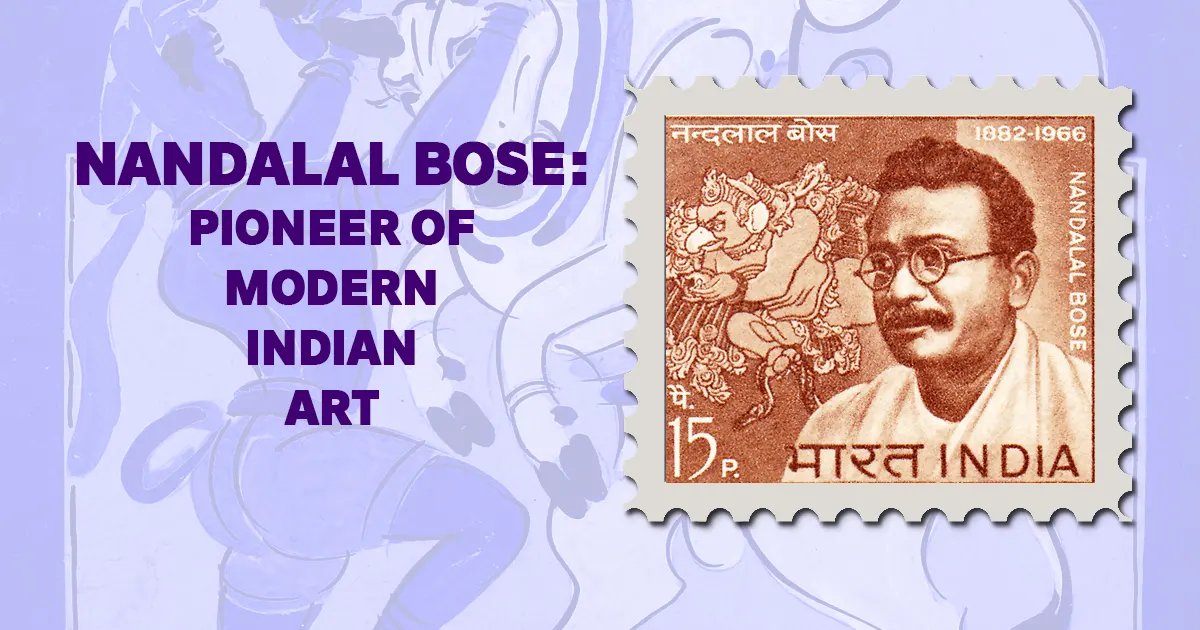
Context:
On December 3rd, India observes the birth anniversary of Nandalal Bose, a trailblazer in modern Indian art and a key figure in the neo-Bengal school of art. His contributions to Indian visual culture, particularly in the context of independence, remain highly regarded.
Early Life and Influences
- Nandalal Bose was mentored by Abanindranath Tagore, one of the leading figures of the Bengal Renaissance, and drew heavily from traditional Indian art forms.
- He was deeply influenced by a variety of art traditions, including:
- Japanese Nihonga (Japanese-style painting),
- Mughal and Rajasthani miniatures,
- Palm-leaf manuscripts,
- Ajanta Cave murals.
- This eclectic fusion led him to develop a distinctive “Indian style” of painting, which merged classical Indian traditions with modern elements.
Notable Works
- Illustrations in the Constitution of India:
- Nandalal Bose and his team at Santiniketan created the iconic illustrations in the Constitution of India, an enduring symbol of India’s cultural heritage.
- Linocut Print of Mahatma Gandhi (1930):
- One of his most famous works, this linocut print depicted Mahatma Gandhi walking with a staff, embodying the spirit of non-violence and the Indian independence movement.
- Indian Flag:
- Bose was instrumental in designing the original Indian flag, which was slightly different from its present form.
- National Emblems:
- He also designed the emblems for India’s highest honors, such as the Bharat Ratna and the Padma Shri.
Career Milestones
- Principal of Kala Bhavan (1922):
- Nandalal Bose became the principal of Kala Bhavan in Santiniketan, where he fostered a new generation of Indian artists and nurtured modern art in the country.
- Mentoring and Leadership:
- Under his leadership, Santiniketan became a major hub for art education, encouraging artistic freedom and creativity while staying rooted in Indian culture.
Honours and Legacy
- Padma Vibhushan (1954):
- Bose was awarded the Padma Vibhushan in 1954, recognizing his monumental contributions to Indian art.
- Fellowship at Lalit Kala Akademi (1954):
- He became the first artist to be elected as a Fellow of Lalit Kala Akademi, India’s premier institution for the promotion of visual arts.
- Deshikottama:
- Vishvabharati University honored him with the title of ‘Deshikottama’, acknowledging his contribution to art and education.
- Recognition by Archaeological Survey of India (1976):
- In 1976, his works were recognized as “art treasures” under the Antiquities and Art Treasures Act, 1972, further cementing his legacy as a crucial figure in Indian art history.




